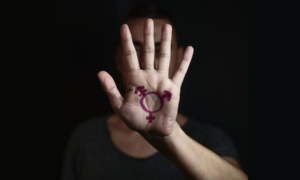Bear with me. I’m trying to make sense of a series of writings spread before me that speak to how race, class and culture combine to influence young people’s opportunities, as well as their perceptions about their rights to opportunities and the proper response when those rights are denied.
First is the new book Reconnecting Disadvantaged Young Men, by Harry Holtzer, Peter Edelman and the late Paul Offner, which suggests that the progressive social improvements of the past decade benefited disadvantaged young women but did little to improve the plight of young men, particularly low-income African-Americans. They recommend increasing investments in education, training and employment opportunities, improving incentives for low-skilled young workers to enter and stay in the labor market, and rectifying economic barriers and disincentives faced by such groups as ex-offenders and noncustodial fathers.
Second is the much-debated critique of this and other studies offered by Orlando Patterson, a Harvard sociology professor, in The New York Times in March. Patterson questions the utility of looking at socioeconomic factors rather than culture, and asks why young African-American men do so poorly in school, father so many children they cannot support and turn to crime and drugs so easily in the face of unemployment. He urges social scientists to stop eschewing cultural explanations for “black male self-destructiveness” and to look at the “cool-pose culture” that provides immediate gratification for dead-end behaviors.
Third are news reports about the orderly school walkouts to protest proposed federal immigration laws that would curb illegal immigration. The Los Angeles Times reported that one day in March, more than 2,000 Los Angeles County high school students left school to protest in the streets. Just five days later, the newspaper reported that the number of students across Southern California walking out in protest of the proposed laws had mushroomed to nearly 30,000.
Last is a pile of articles covering the massive youth protests in France against the new labor law that lets employers dismiss workers under 26 without cause within two years of their employment. This threatens the guaranteed job security system that some argue has led to youth unemployment rates as high as 23 percent. Hundreds of thousands of students and workers have brought many public functions, such as transportation, to a halt.
The protesters are from all backgrounds. But there are class and racial tensions between the peaceful high school and college protestors and the increasingly disorderly low-income youth. The latter are not only causing outbreaks in the housing projects, but are moving into the cities, showing disdain for the law and the more affluent protestors.
Why aren’t African-American males walking out of schools in protest of laws that take away their freedom more subtly, but just as surely as the proposed immigration bills would affect illegal immigrants? (For example: zero-tolerance policies that lead to disproportionate expulsions of African-Americans from school.) Why aren’t they rallying against employment policies that not only don’t guarantee job security, but don’t guarantee jobs? Because they don’t perceive that this country cares.
Many, however, have internalized the problem. Many a young black male wages an internal war against himself: mortgaging the future he does not believe he has for a present he knows is not ideal, but is real. Patterson suggests that these young men place too much emphasis on the present. But as Holtzer, Edelman and Offner note, the present is all they can be sure of, unless society makes different investments for them.
The youth in France have been protesting the withdrawal of a certainty – job security. The affluent youth protested peacefully, confident that they would be heard, clear about what they have to lose. The lower-class youth have been angry, turning on their own communities, understanding that they have that same right to job security, but that it is too often not available to them.
Student leaders have been reluctant to criticize the youth from poor communities, suggesting in The Washington Post that these young people have been “excluded from the system” and have “no other means to express themselves.”
Race, class and culture have converged in the United States to create a climate in which many young black men perceive that their only option is to try not to care and to look cool doing it. The problem is not that these young people are disconnected.
The problem is that they were never connected and never explicitly promised assistance. Given this painful reality, what other choice is there than to pretend that being left out doesn’t matter?
Programs like the ones described in Reconnecting can help create stepping stones toward the future. But as the authors acknowledge, programs are not enough. The “cool walls” won’t go down until there are cadres of steady, caring people who are willing to connect the stepping stones to make solid pathways out of poverty and into productivity, and scores of public leaders who have their backs, whatever the cost.
The presenting problem may be youth culture, but the solution is adult commitment: steady public commitment, not to just help a few young black men “beat the odds,” but to change the odds for all of them.





























